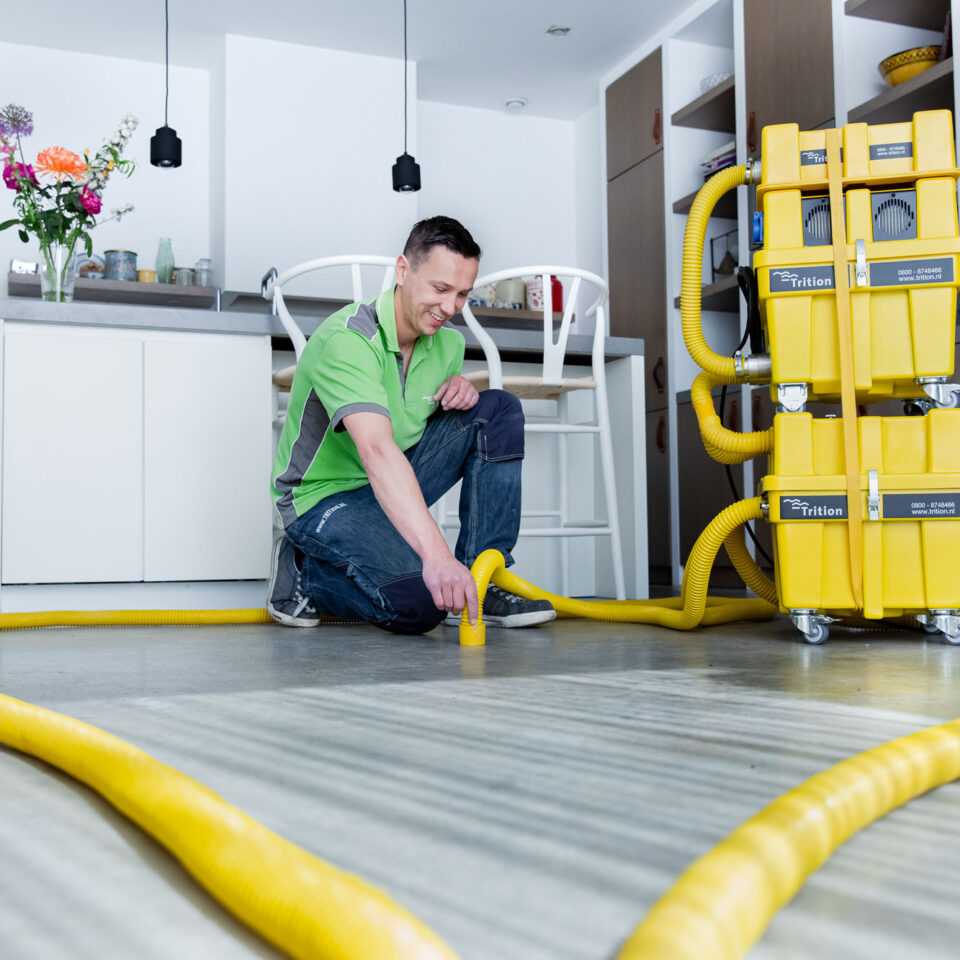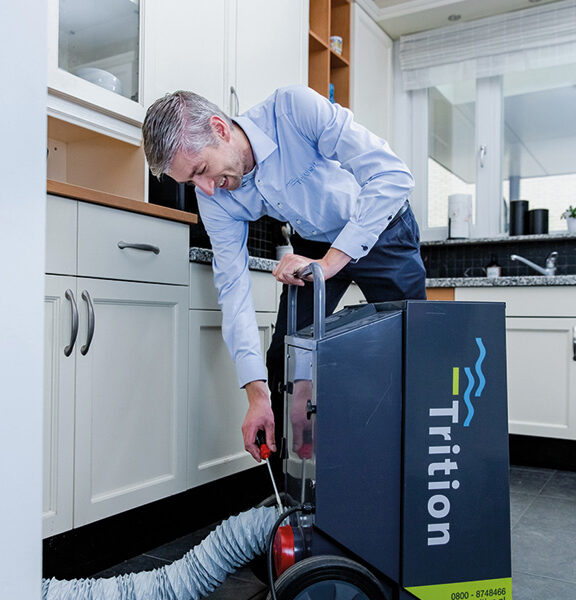Drying technology
Our expert professionals specialise in advanced drying techniques and know exactly which drying equipment is best for your specific situation.

Fast and efficient drying
When water damage occurs, it is important to dry rooms as quickly and efficiently as possible. Water damage can be the result of a leak or heavy rainfall. Our expert professionals specialise in advanced ways of drying technology and know exactly which drying equipment is best suited to your specific situation. Specialist drying of walls, floors, ceilings and basements is familiar territory to us. Sustainable damage repair is the standard for us: we make sure it can be repaired.
Our working method
Efficient drying during water damage is crucial to minimise inconvenience and consequential damage and prevent new problems. We offer tailor-made solutions carefully selected by our specialists. Drying floors, walls, roofs or building drying: we do not shy away from any challenge. We use state-of-the-art equipment for this purpose. The drying equipment we use, based on condensation technology, is equipped with IR heating elements. This allows us to keep energy consumption as low as possible while guaranteeing high drying capacity and precise control of the process. Our specialists keep a close eye on this. With our latest sustainable Remote Monitoring service, we can even remotely monitor and adjust drying processes to complete drying as quickly as possible without damage.

Why Dolmans in drying technology?
- Sustainable damage repair is the norm for us: we repair rather than replace.
- Our drying specialists monitor the drying process (sometimes even remotely), ensuring that drying is carried out in the most efficient way possible.
- Thanks to our years of experience, we know how to fix water damage in all situations and for all kinds of customers in the best possible way.
- Even in hard-to-reach places, e.g. between roof layers in roof structures or in floating screed structures, cavity walls and metal stud walls, we guarantee efficient drying of moisture problems.
- Because we are represented throughout the country, we can guarantee to be there within two hours in case of an emergency.
FAQ
On average, how long does it take for a room to dry completely after water damage?
The average drying time depends, among other things, on the extent of the damage, the type of water (clean, slightly contaminated or heavily contaminated), the environmental conditions and the drying techniques we (can) use. It can vary from a few hours to several weeks.
Are your drying techniques safe for materials and structures on my premises?
We use advanced equipment and methods specially designed to effectively remove moisture. Our drying specialist closely monitors the drying process to ensure that drying is carried out without causing damage to materials or structures. Indeed, drying too quickly can lead to cracking.
What should you do if you have water damage?
Safety first: in the event of substantial water damage, the most important thing is to keep yourself and others present safe. Then, the priority is to locate the source of leakage and eliminate it, for example, by shutting off the water supply.
How do I prevent mould after water damage and the drying process?
To prevent mould, it is important to dry and ventilate properly. This is necessary to reduce humidity and speed up drying. Still suffering from mould in your home? We can help.
What can I do to minimise the risk of water damage in the future?
There are several preventive measures you can take to minimise the chances of water damage in the future. Regular maintenance is most important in this. Read more tips on how to prevent leaks here.
Can the drying process harm the health of those present in the building?
We use condensation techniques and infrared heating, among others. These have no harmful effects on health. However, the indoor climate of a building can be affected by water damage. This can cause mould, for example. This can be harmful to health. We can carry out indoor climate studies to see if this is the case.
What is reimbursed in case of water damage?
Water damage is covered in contents and building insurance. Damage to property, such as furniture and electronics, is covered by contents insurance. Damage to walls and your floor, for example, is covered by the building insurance. Whether you receive compensation and how much is often determined by an insurance expert. Consult your policy for more information about your damage coverage.
Contact with Dolmans
"*" indicates required fields
Request a free quote
Would you like to use our services and expertise in drying technology? Request a no-obligation quote.
Didn't find what you were looking for?
Perhaps one of these services will then better suit your demand.



